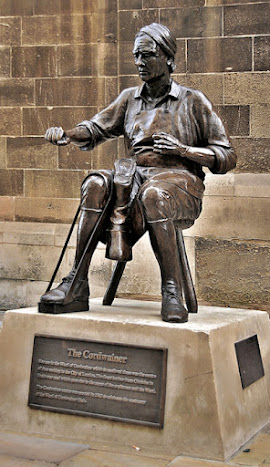The Clothes Men Wear
"A lull in the struggle,
A truce in the fight,
The whirr of machines
And the dearly bought right,
Just to labor for bread,
Just to work and be fed."
-Mary O’Reilly, “After the Strike,” from Women’s Trade Union League of Chicago
 |
| Garment Industry Sweatshop 1905 |
I found an article from the Chicago Tribune in 1889 describing the explosive growth of garment making in Chicago and nationwide as well as the process of actually making a piece of clothing in the day. At the turn of the century, New York's garment dominated in women's clothing so Chicago's industry focused on men's clothing. At it's peak, Chicago reportedly manufactured 15% of men's garments in America.
 |
| 1897 Sears Catalog |
The garment industry was dominated by immigrants, including Bohemians and the Vokoun family. The article makes for interesting reading but it's behind a paywall so I just copied it and posted it. Here is another article from the Encyclopedia of Chicago on clothing manufacturing during that era.
If you noticed, the article mentioned the Bohemian quarter on 18th, 19th, and 20th Streets. Charles Vokoun's home and shop was on 18th Street. The roster of family members employed in garment and clothing industry at some point based on census records include:
-Jan Vokoun
-Frank Vokoun
-Frank J Vokoun Jr
-James W Vokoun (Frank J Jr's son)
-Florence Vokoun Lilly (Frank J Jr's daughter)
-Anna Vokoun Placek (Frank's daughter)
-Charles Vokoun
-Anna Vokoun Kopriva (Charles' daughter)
-Ella Vokoun Jandak
-James Jellison (husband of Anna Vokoun)
-Rudolph Vokoun
-Lydia Otradovec Vokoun (Rudolph's wife)
In 1910 city-wide garment workers struck to protest poor pay and working conditions. The Chicago Garment Workers' Strike, also known as the Hart, Schaffner and Marx strike, started when an 18 year-old Ukrainian immigrant, Hannah Shapiro, decided she could not accept three and three-fourths cents (a reduction from four cents) to sew a pocket into a pair of men’s trousers. Ultimately, some 40,000 workers joined her and succeeded, at least partially, in improving pay and working conditions. Here is a great article and a much shorter Wikipedia article about that strike. I don't have any doubt that our forebears would have been involved. Too bad we can't know their stories about it. Learning about the work and life of immigrants of their time and place does make one wonder about their feelings about the decision to come over and trade a life of farming and craftwork in a small village for industrial labor in a crowded gotham.




Comments
Post a Comment